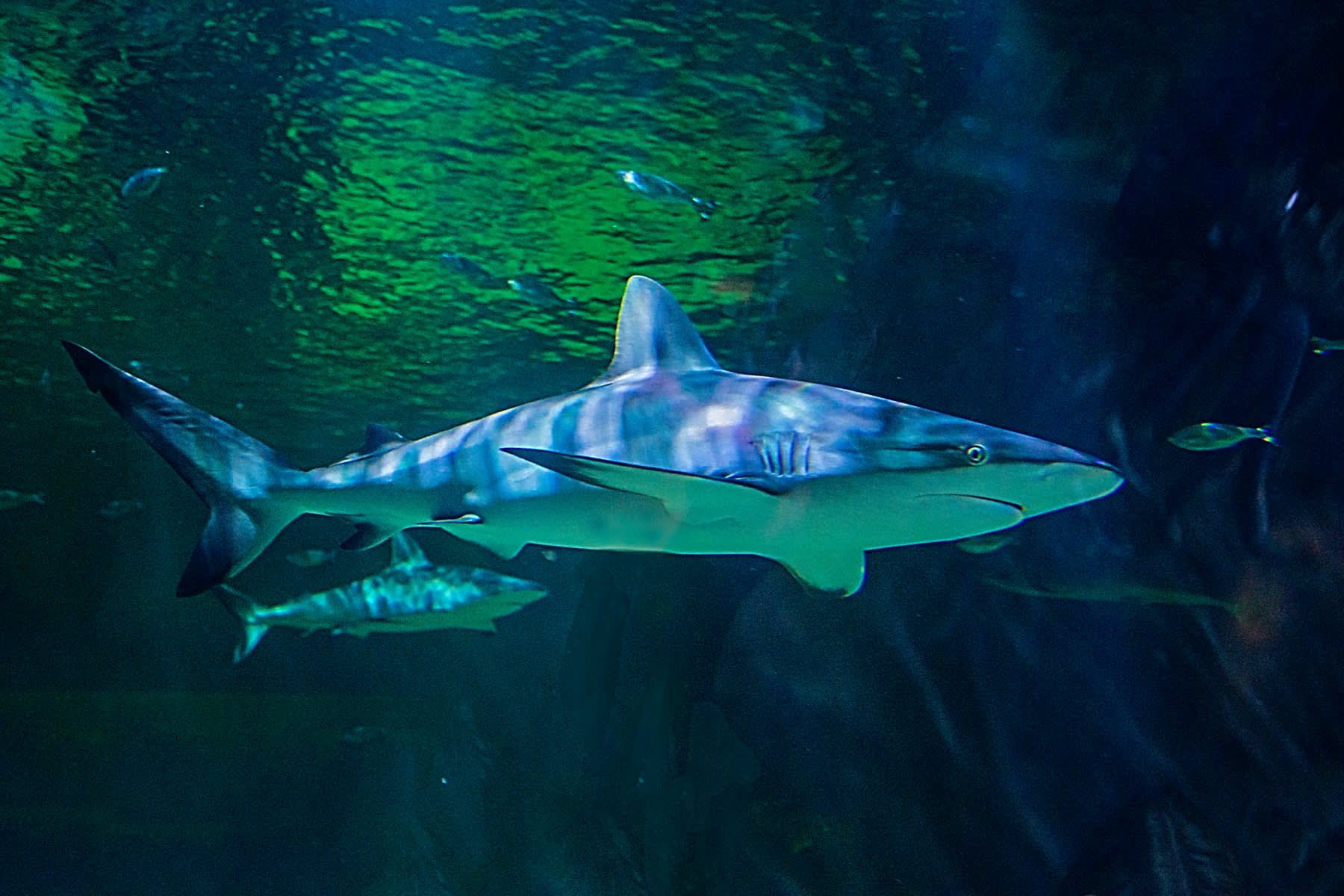
9 Marine Species You Wouldn't Expect to See in Utah
Travel the world and the seven seas. Everybody is looking for something at Loveland Living Planet Aquarium.
Utah isn’t exactly known as a hotbed for marine life — or at least the kind of marine life anyone but a brine-shrimp-ologist would be interested in — but there’s a giant fish tank a few miles south of Salt Lake that never _sea-_ses to amaze. Here’s a preview of the international aquatic adventure you’ll have at Loveland (funny name for a place full of animals that prefer water, eh?). Read on for nine especially splashy sea species you should be sure to see on your expedition.
Sweet dreams are made of these (exhibits). Who are you to disagree?
Expedition: Asia
1. Binturong: Sometimes called bearcats, binturongs are found in a variety of forests across South and Southeast Asia. They have a unique buttery popcorn smell due to a compound in their urine that shares a similar chemical compound to the one released when popping popcorn.
2. Clouded Leopard: Clouded Leopards are found in the Himalayan foothills, Southeast Asia, and China primarily in lowland tropical rainforests. They are considered an endangered species with deforestation and hunting resulting in their population decline.
Ocean Explorer
3. Giant Octopus: The giant octopus is the largest species of octopus. (You heard it hear first.) Found along the Pacific Coast, these massive creatures are incredibly smart and have been known to quickly solve mazes, “think” through complex problems and change their color, shape and texture to mimic other species. WE JUST SAID GIANT OCTOPUSES CAN CAMOUFLAGE THEMSELVES AS OTHER SPECIES.
4. Green Sea Turtle: The Green Sea Turtle can be found in tropical and subtropical waters around the globe. Although they can be found worldwide, they are considered an endangered species due to their many predators and high threat of habitat degradation due to ocean pollution. But these guys are safe and sound here.
5. Zebra Shark: Zebra sharks can be found from Japan to Australia in the Pacific Ocean as well as in the Red Sea and Indian Ocean. Born with dark bodies and yellowish stripes that fade in adulthood, zebra sharks’ bodies turn greyish-tan and develop dark spots as they age… sort of like some humans, come to think of it.
Antarctic Adventure
6. Gentoo Penguins: These cute little buggers live in the Sub-Antarctic and they’re basically the Michael Phelpses of penguins. While most penguins can hold their breath for about a minute, gentoo penguins have been recorded holding their breath for up to seven minutes. They also swim faster than any other penguin species, clocking in at up to 22 miles per hour. Breathtaking.
Gentoo Penquins
Journey to South America
7. Blue and Gold Macaw: Blue and Gold Macaws can be found in tropical rainforests along swamps and rivers in Mexico, Central America, and northern parts of South America. The tiny black feathers that form the stripes along their face create a pattern as unique to each individual bird as fingerprints are to humans… super helpful for phylum Chordata detectives.
8. Green Aracari: The Green Aracari can be found in the lowland forests of South America. They are the only member of the toucan family to use their nests for sleeping outside of the breeding period. It’s almost like they see humans sleeping in their beds every night and think, “Toucan play at that game.”
Discover Utah
9. North American River Otters: Did you know otters were native to Utah? Spot one on the Green, Colorado or Provo Rivers or at Lake Powell if you’re lucky (or at the Loveland Living Planet Aquarium even if you’re unlucky). These incredibly playful creatures can actually see underwater due to a third clear eyelid that helps protect their eye as they swim. The rest of us schmucks have to buy goggles.
Otter
Plan Your Visit
Click here for a calendar of events
Click here for ticket pricing and purchasing.